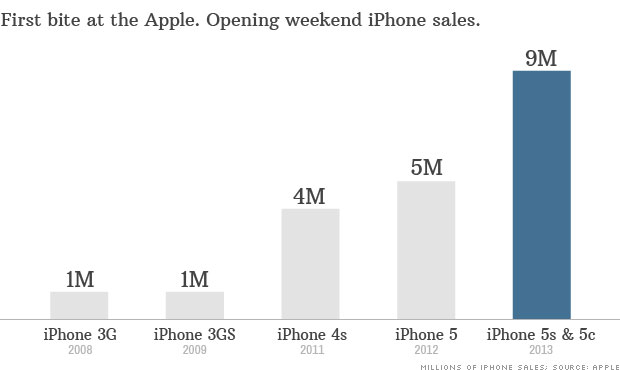 With mandatory integration of Google’s social media platform Google+ onto Youtube users’ profiles, consumer outcry has been immense. Recent TIME magazine coverage details a couple interesting points. Firstly, the massive response to the implementation comes not only from website viewers, but from content creators as well – including the largest channel on the website, which recently shared its displeasure with the changes. Secondly, there is no sign of relenting and changing policy from Google’s part. As far as I’m concerned, this is a massive detriment to Youtube’s success. Even if the company were to reverse its policies, there’s now a disconnect between the content-creators and commenting users, and the website,which subsequently results in general negative sentiment about Youtube and its services. Google has potentially hurt Youtube’s fundamental user base – Youtube’s lifeblood. The same result happened with the Xbox One’s announced DRM policies, which resulted in potential boycotts in the face of Sony’s PS4 arriving to markets. When big-name online companies play games with privacy and internet policies, they are risking significant backlash from vital customer segments, especially when policies limit consumer options and ultimately fail to reflect their preferences. No extra Google+ or Xbox Live users are worth sacrificing consumer trust, and Google runs a great risk if they fail to reverse or alter their Youtube policies.
With mandatory integration of Google’s social media platform Google+ onto Youtube users’ profiles, consumer outcry has been immense. Recent TIME magazine coverage details a couple interesting points. Firstly, the massive response to the implementation comes not only from website viewers, but from content creators as well – including the largest channel on the website, which recently shared its displeasure with the changes. Secondly, there is no sign of relenting and changing policy from Google’s part. As far as I’m concerned, this is a massive detriment to Youtube’s success. Even if the company were to reverse its policies, there’s now a disconnect between the content-creators and commenting users, and the website,which subsequently results in general negative sentiment about Youtube and its services. Google has potentially hurt Youtube’s fundamental user base – Youtube’s lifeblood. The same result happened with the Xbox One’s announced DRM policies, which resulted in potential boycotts in the face of Sony’s PS4 arriving to markets. When big-name online companies play games with privacy and internet policies, they are risking significant backlash from vital customer segments, especially when policies limit consumer options and ultimately fail to reflect their preferences. No extra Google+ or Xbox Live users are worth sacrificing consumer trust, and Google runs a great risk if they fail to reverse or alter their Youtube policies.
Youtube’s Google+ Integration: Severing Ties, Sacrificing Lifeblood
Filed under Uncategorized
Business Advice From a Pseudoscientist?
 As Malcolm Gladwell details in my absolute favourite TED talks presentation, “Choice, Happiness and Spaghetti Sauce”, customer segments in many industries are often too broadly defined in terms of consumer preferences. Through an analysis of the works of Howard Moskowitz , Gladwell details a powerful market segmentation method, known as horizontal segmentation. Effectively, horizontal segmentation is the basic understanding that desirable variety for target consumers has potential to be sufficiently more profitable than a ‘one-size fits all’ type of product. As well, not even the consumer’s themselves has a realistic understanding of their ideal preferences for certain goods. Using the beverage industry for an example, Moskowitz discovered that they key to success for a company like Pepsi is to develop more flavours of Pepsi. And using the Spaghetti Sauce market as an example, it’s detailed that extra-chunky tomato sauce is preferred by 1/3 of U.S consumers, and, at the time of the example (1980s), no such extra-chunky tomato sauce product retailed. Gladwell makes one final statement I hold very highly for both business and social practices: “by embracing the diversity of human beings, you will find a surer way to true happiness”.
As Malcolm Gladwell details in my absolute favourite TED talks presentation, “Choice, Happiness and Spaghetti Sauce”, customer segments in many industries are often too broadly defined in terms of consumer preferences. Through an analysis of the works of Howard Moskowitz , Gladwell details a powerful market segmentation method, known as horizontal segmentation. Effectively, horizontal segmentation is the basic understanding that desirable variety for target consumers has potential to be sufficiently more profitable than a ‘one-size fits all’ type of product. As well, not even the consumer’s themselves has a realistic understanding of their ideal preferences for certain goods. Using the beverage industry for an example, Moskowitz discovered that they key to success for a company like Pepsi is to develop more flavours of Pepsi. And using the Spaghetti Sauce market as an example, it’s detailed that extra-chunky tomato sauce is preferred by 1/3 of U.S consumers, and, at the time of the example (1980s), no such extra-chunky tomato sauce product retailed. Gladwell makes one final statement I hold very highly for both business and social practices: “by embracing the diversity of human beings, you will find a surer way to true happiness”.
Image: Malcolm Gladwell
Filed under Uncategorized
Twitter IPO: Follow The Trend, Give It Time
 Recently, Faiyaz Moosa wrote a blog in regards to the latest downgrading of Twitter after its IPO. Moosa’s predictions about the future of Twitter focus entirely on its unproven results, arguing that Twitter’s long-term prospects are ideal if it can sufficiently monetize its practices. The article he cites, on the other hand, argues that Twitter’s quarterlies and earnings reports will be a burden to its price, as investors will negatively respond. Twitter’s IPO leaves a couple valuable lessons about investing. The first is that sometimes buying into a trend is worth more than the actual investment itself. As Twitter’s securities have shot up to a price of $45, it’s obvious that investors like the speculative nature of tech and social media IPOs, as similar positive results have come from the IPOs of its counterparts. Secondly, financial reports aren’t always an instantaneous reflection of how a share price will respond. As Twitter is a growth stock, there is a naturally speculative nature about its future, so investors will give it time to establish a working business model. After Tesla has released two under-performing financial releases this year, its share price only dropped because a Model S had a battery fire. One thing’s for sure, which is arguably the one thing that matters: Twitter has access to a colossally large number of users on its service, which gives it stunning versatility in how it attempts to monetize.
Recently, Faiyaz Moosa wrote a blog in regards to the latest downgrading of Twitter after its IPO. Moosa’s predictions about the future of Twitter focus entirely on its unproven results, arguing that Twitter’s long-term prospects are ideal if it can sufficiently monetize its practices. The article he cites, on the other hand, argues that Twitter’s quarterlies and earnings reports will be a burden to its price, as investors will negatively respond. Twitter’s IPO leaves a couple valuable lessons about investing. The first is that sometimes buying into a trend is worth more than the actual investment itself. As Twitter’s securities have shot up to a price of $45, it’s obvious that investors like the speculative nature of tech and social media IPOs, as similar positive results have come from the IPOs of its counterparts. Secondly, financial reports aren’t always an instantaneous reflection of how a share price will respond. As Twitter is a growth stock, there is a naturally speculative nature about its future, so investors will give it time to establish a working business model. After Tesla has released two under-performing financial releases this year, its share price only dropped because a Model S had a battery fire. One thing’s for sure, which is arguably the one thing that matters: Twitter has access to a colossally large number of users on its service, which gives it stunning versatility in how it attempts to monetize.
Filed under Uncategorized
The Times are Changing: 3D Printing and Manufacturing Processes
In reference to Erik Brynjol ffson’s TED Talks presentation, where he illustrates productivity revolutions through new arrivals in General Purpose Technology, I’m beginning to wonder if the 3D printer might be that next technological revolution. As a personal, $1,000 retail version of a metal 3D printer is in development, 3D printers are already being identified as an incredibly powerful and worthwhile piece of research and development. Following the computer that came before it, potential drastic decreases in price, combined with simultaneous exponential advances in speed and power might be the future path for 3D printers – to the point where it potentially becomes a common household item. In a more important sense, however, 3D printing offers a much larger potential disruption to manufacturing processes. Firms are already being pressed by the threat of losing out to lower-cost manufacturing processes from competitors working to utilize 3D printing, similar to Netflix adapting to the online media trend, while Blockbuster suffered an ill-fate. But which industries need to be concerned? Jewellery manufacturers may find a lower-cost production process for their products, for example, and weapon manufacturers could find weapon modelling and prototyping to be a completely different process. If this is, in fact, a technological transition period for manufacturing industries, how, as a potentially affected business, do you assess the need to change, if at all?
ffson’s TED Talks presentation, where he illustrates productivity revolutions through new arrivals in General Purpose Technology, I’m beginning to wonder if the 3D printer might be that next technological revolution. As a personal, $1,000 retail version of a metal 3D printer is in development, 3D printers are already being identified as an incredibly powerful and worthwhile piece of research and development. Following the computer that came before it, potential drastic decreases in price, combined with simultaneous exponential advances in speed and power might be the future path for 3D printers – to the point where it potentially becomes a common household item. In a more important sense, however, 3D printing offers a much larger potential disruption to manufacturing processes. Firms are already being pressed by the threat of losing out to lower-cost manufacturing processes from competitors working to utilize 3D printing, similar to Netflix adapting to the online media trend, while Blockbuster suffered an ill-fate. But which industries need to be concerned? Jewellery manufacturers may find a lower-cost production process for their products, for example, and weapon manufacturers could find weapon modelling and prototyping to be a completely different process. If this is, in fact, a technological transition period for manufacturing industries, how, as a potentially affected business, do you assess the need to change, if at all?
Image: The intricate possibilities of 3D printing, shown through a miniature urban diorama
Filed under Uncategorized
Pet Rocks: The Million Dollar Gag
 On the topic of entrepreneurship, I urge any and everyone to understand that successful endeavours come in all shapes and sizes. In particular, Gary Dahl, a 1975 entrepreneur, created and sold Pet Rocks as gimmick items. Gary basically put rocks he collected in boxes, and sold them with a pet manual, detailing how the rocks are “maintenance free”, and “easy to train”. And what do you know? Retailing at 95 cents a rock, Dahl sold 100,000 rocks a week at one point, eventually becoming a self-made millionaire in the 70s, according to this relic of a people magazine article. The lesson? Sometimes even the most absurd and ridiculous ideas become successful in the business world. As well, you don’t have to sell the practicality of a good. In the case of Pet Rocks, Dahl is essentially selling humour. Only 25% of start-ups may end up a successful undertaking, but don’t underestimate the capability of something as odd as Dahl’s rocks when it comes to consumer purchasing trends. Successful marketers and promoters will tell you, ‘how you promote and brand’ may matter significantly more than ‘what it is you’re selling’.
On the topic of entrepreneurship, I urge any and everyone to understand that successful endeavours come in all shapes and sizes. In particular, Gary Dahl, a 1975 entrepreneur, created and sold Pet Rocks as gimmick items. Gary basically put rocks he collected in boxes, and sold them with a pet manual, detailing how the rocks are “maintenance free”, and “easy to train”. And what do you know? Retailing at 95 cents a rock, Dahl sold 100,000 rocks a week at one point, eventually becoming a self-made millionaire in the 70s, according to this relic of a people magazine article. The lesson? Sometimes even the most absurd and ridiculous ideas become successful in the business world. As well, you don’t have to sell the practicality of a good. In the case of Pet Rocks, Dahl is essentially selling humour. Only 25% of start-ups may end up a successful undertaking, but don’t underestimate the capability of something as odd as Dahl’s rocks when it comes to consumer purchasing trends. Successful marketers and promoters will tell you, ‘how you promote and brand’ may matter significantly more than ‘what it is you’re selling’.
Filed under Uncategorized
The Worth of a Degree is Unquantifiable
 In response to recent classwork, and fellow classmate Sunny Zheng’s discussion of the worth of a degree, I’ve decided to weigh in. I feel Sunny makes a lot of powerful connections in a quantitative sense, linking ideas of job prospects and return on investment. From personal experiences speaking to associates of my father, and contacts from summer work, however, I’ve had the opportunity to gauge what a degree equates to in one’s future. One truth is abundantly clear: a degree is not ensuring an individual success in their future; instead, it merely provides one with a fundamental base for structuring a career. For that reason, I tend not to quantify a degree with statistics. Think about a major investment firm, for example. An individual could be the most successful investment advisor for a company with a sciences degree, for they could be one of a few really powerful biotech securities analysts. But, their degree only acted as a supplement – a base, rather than a means of getting a job. When I go forward in my university education, I won’t look to a BComm as the reason I’m qualified for a job. It’s like what Brian Wong had said during the Sauder panel for incoming first-years (roughly paraphrased), “when I interview potential employees for Kiip, their college degree is simply a checkbox on my notes, nothing more”.
In response to recent classwork, and fellow classmate Sunny Zheng’s discussion of the worth of a degree, I’ve decided to weigh in. I feel Sunny makes a lot of powerful connections in a quantitative sense, linking ideas of job prospects and return on investment. From personal experiences speaking to associates of my father, and contacts from summer work, however, I’ve had the opportunity to gauge what a degree equates to in one’s future. One truth is abundantly clear: a degree is not ensuring an individual success in their future; instead, it merely provides one with a fundamental base for structuring a career. For that reason, I tend not to quantify a degree with statistics. Think about a major investment firm, for example. An individual could be the most successful investment advisor for a company with a sciences degree, for they could be one of a few really powerful biotech securities analysts. But, their degree only acted as a supplement – a base, rather than a means of getting a job. When I go forward in my university education, I won’t look to a BComm as the reason I’m qualified for a job. It’s like what Brian Wong had said during the Sauder panel for incoming first-years (roughly paraphrased), “when I interview potential employees for Kiip, their college degree is simply a checkbox on my notes, nothing more”.
Picture: Brian Wong, Sauder Grad and CEO of Kiip
Filed under Uncategorized
Apple’s iPhone 5C/S Sales Crush Any and All Negative Speculation
Just as negative sentiment s towards the future of Apple start to grow, new Apple CEO Tim Cook has, within a mere weekend, thrust Apple Inc. into another golden age. First weekend iPhone 5C/5S sales astoundingly topped 9 million units, showing that the company is by no means ready to give away its Market Share to Android and Samsung. To put that into perspective, with an estimated profit margin of 40% coupled with a selling price of $627, iPhone has, in three days, posted about 2.8 billion in profits, according to the math done by Forbes’ Tim Worstall. The results are a testament to the power of Apple in the face of adversity, powering through its first real threat to its mobile phone market share with finesse. As well, you get a glimpse of Apple’s phone consumer base, which appears to be very steadily growing in favor of the phone, despite continued positive sales results from their competitors. In a case like Apple’s, when a product works, all you need is to upgrade its design from year to year to see better results. The real question is of how much longer Apple’s iPhone will keep its growing sales trend, as it can’t last forever… right?
s towards the future of Apple start to grow, new Apple CEO Tim Cook has, within a mere weekend, thrust Apple Inc. into another golden age. First weekend iPhone 5C/5S sales astoundingly topped 9 million units, showing that the company is by no means ready to give away its Market Share to Android and Samsung. To put that into perspective, with an estimated profit margin of 40% coupled with a selling price of $627, iPhone has, in three days, posted about 2.8 billion in profits, according to the math done by Forbes’ Tim Worstall. The results are a testament to the power of Apple in the face of adversity, powering through its first real threat to its mobile phone market share with finesse. As well, you get a glimpse of Apple’s phone consumer base, which appears to be very steadily growing in favor of the phone, despite continued positive sales results from their competitors. In a case like Apple’s, when a product works, all you need is to upgrade its design from year to year to see better results. The real question is of how much longer Apple’s iPhone will keep its growing sales trend, as it can’t last forever… right?
Filed under Uncategorized
Pipelines vs. Rail: Closure on the Horizon
With another Canadian derailment taking place in Saskatchewan this week, safety concerns about rail transportation are becoming a prevalent topic among provincial governments. Companies like Enbridge, with their proposed pipeline to BC, the Northern Gateway, are looking to take advantage o f the situation, emphasizing that the alternative to their pipelines will be increased oil transport by rail. Having faced great opposition for their pipelines from activist groups and provincial legislatures, are the recent Canadian derailments the tipping point for the obstacles blocking the creation of new pipes? Ultimately, the alternative to their methods are CN Rail’s movement of oil from Alberta’s sands by rail. Considering the advantage in efficiency of pipelines, alongside the new safety concerns, it appears that the change will be favoring pipelines. As an added point, this places activist organizations in a bad spot, as they can’t keep denying the pipelines if their advantages show them as the best possible method for oil transport; continued resistance could equate to a fight against the Canadian oil production and shipping entirely – a fight that cannot be won. So, if you can’t stop oil, do you face the dangers of the past in rail, or do you try and embrace the speculative future of pipelines? Pick your poison, nation.
f the situation, emphasizing that the alternative to their pipelines will be increased oil transport by rail. Having faced great opposition for their pipelines from activist groups and provincial legislatures, are the recent Canadian derailments the tipping point for the obstacles blocking the creation of new pipes? Ultimately, the alternative to their methods are CN Rail’s movement of oil from Alberta’s sands by rail. Considering the advantage in efficiency of pipelines, alongside the new safety concerns, it appears that the change will be favoring pipelines. As an added point, this places activist organizations in a bad spot, as they can’t keep denying the pipelines if their advantages show them as the best possible method for oil transport; continued resistance could equate to a fight against the Canadian oil production and shipping entirely – a fight that cannot be won. So, if you can’t stop oil, do you face the dangers of the past in rail, or do you try and embrace the speculative future of pipelines? Pick your poison, nation.
Image: Aftermath of recent Lac-Megantic, Quebec derailment.
Filed under Uncategorized
Tesla Motors: Speculating an Optimistic Outcome
As NYU Professor Aswath Damodaran remarks on his investment blog, “Musings on Markets”, Tesla Motors is a company with the upper hand of innovation. Their future, according to Aswath, can either be as a power train and battery company, a “first-mover” in the energy vehicle industry, or as a revolution  in the automobile industry – potentially dwarfing the business models of their primary competitors.
in the automobile industry – potentially dwarfing the business models of their primary competitors.
If you’re optimistic for the future of Tesla Motors like I am, you’re interested in speculating which of these three outcomes Tesla is most likely to end up. Personally, I believe it to fall under the “first-mover” category.
It makes most sense that Tesla continues working towards supplying the immense consumer demand for its Model S sedan. The fivefold increase in company share price over the past year is a clear indicator that consumer’s think Tesla’s ‘S’ is the electric vehicle, as opposed to hybrids or other electric alternatives. So, with that said, Tesla can, and most likely will create its own market share in a new, innovation focused, energy vehicles industry. From that point forward, it becomes a matter of gauging where Tesla’s product lines can go from there.
Filed under Uncategorized
Futuristic Outlook for SNC Lavalin Key to Initial Reputation Rebuild
Taking note of the recent scandal involving Canadian Engineering firm SNC Lavalin, dwelling in the problems of the past doesn’t repair a company’s tarnished reputation, as is noted in a recent article in Global BC. The January allegations of $160 Million in bribes to the Gaddafi regime in Libya for land contracts – a deli berate and obvious betrayal of the ICECB’s fundamental business conduct regulations (pages 14-15 on pdf) – has massively damaged both the consumer and investor side of their reputation.
berate and obvious betrayal of the ICECB’s fundamental business conduct regulations (pages 14-15 on pdf) – has massively damaged both the consumer and investor side of their reputation.
SNC Lavalin serves as a strong example of how the incentive of unethical business practices shouldn’t supersede the importance of legal profit maximization.Companies following unethical practices, though dependent on scale, can easily find themselves in a similar situation.
In the article, SNC has a simple outlook: “let’s look at the future”, according to Chief Compliance Officer Andreas Pohlmann. The firm effectively starts a new chapter for its organization by being forward-looking. And when it comes to the initial steps of rebuilding their reputation, SNC’s path is easily more potent than attempting to cover up a colossal blemish as it stands.
Click to see the investor-side effect of the scandal
Photo Reference: SNC Lavalin
Filed under Uncategorized
